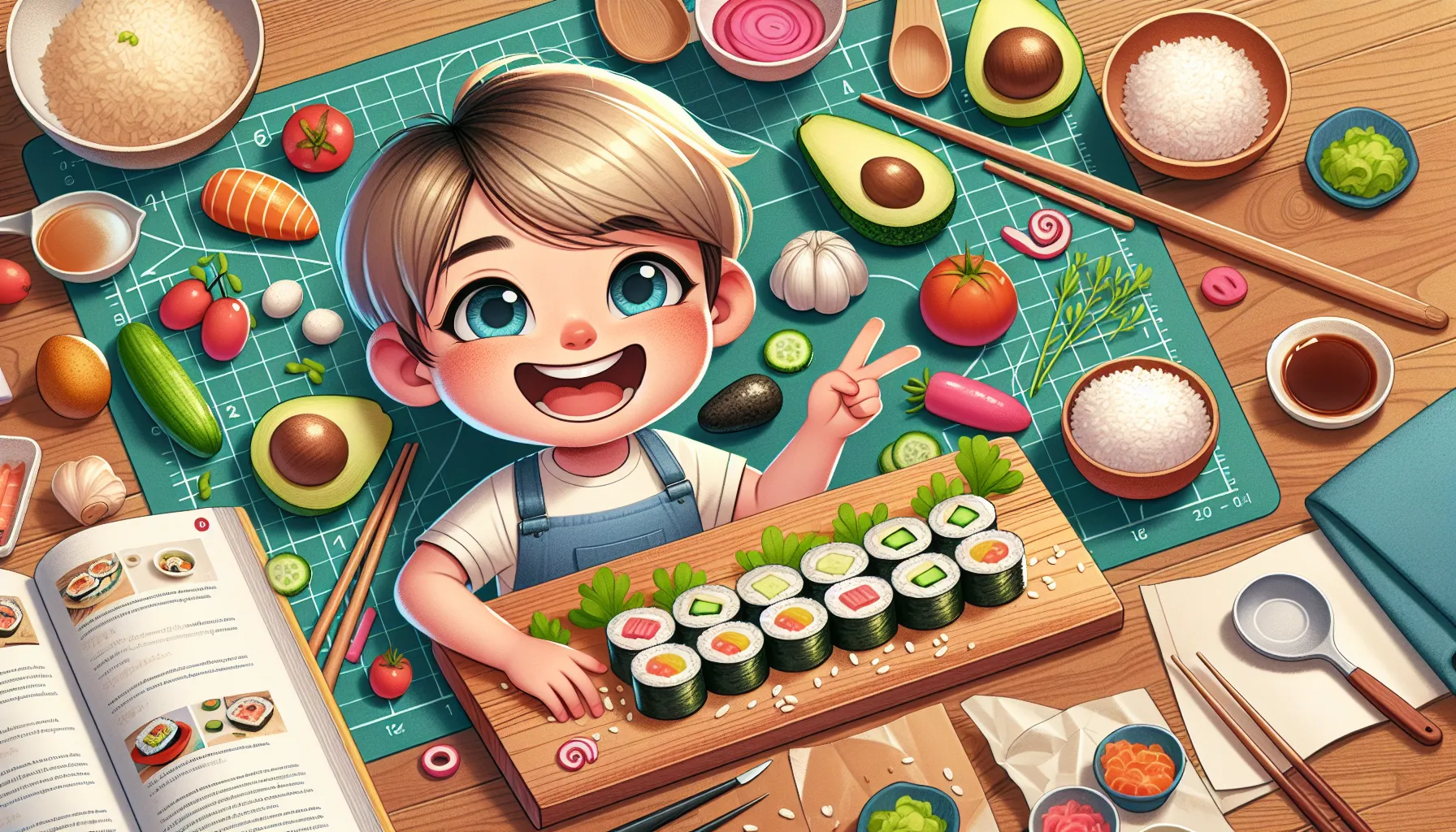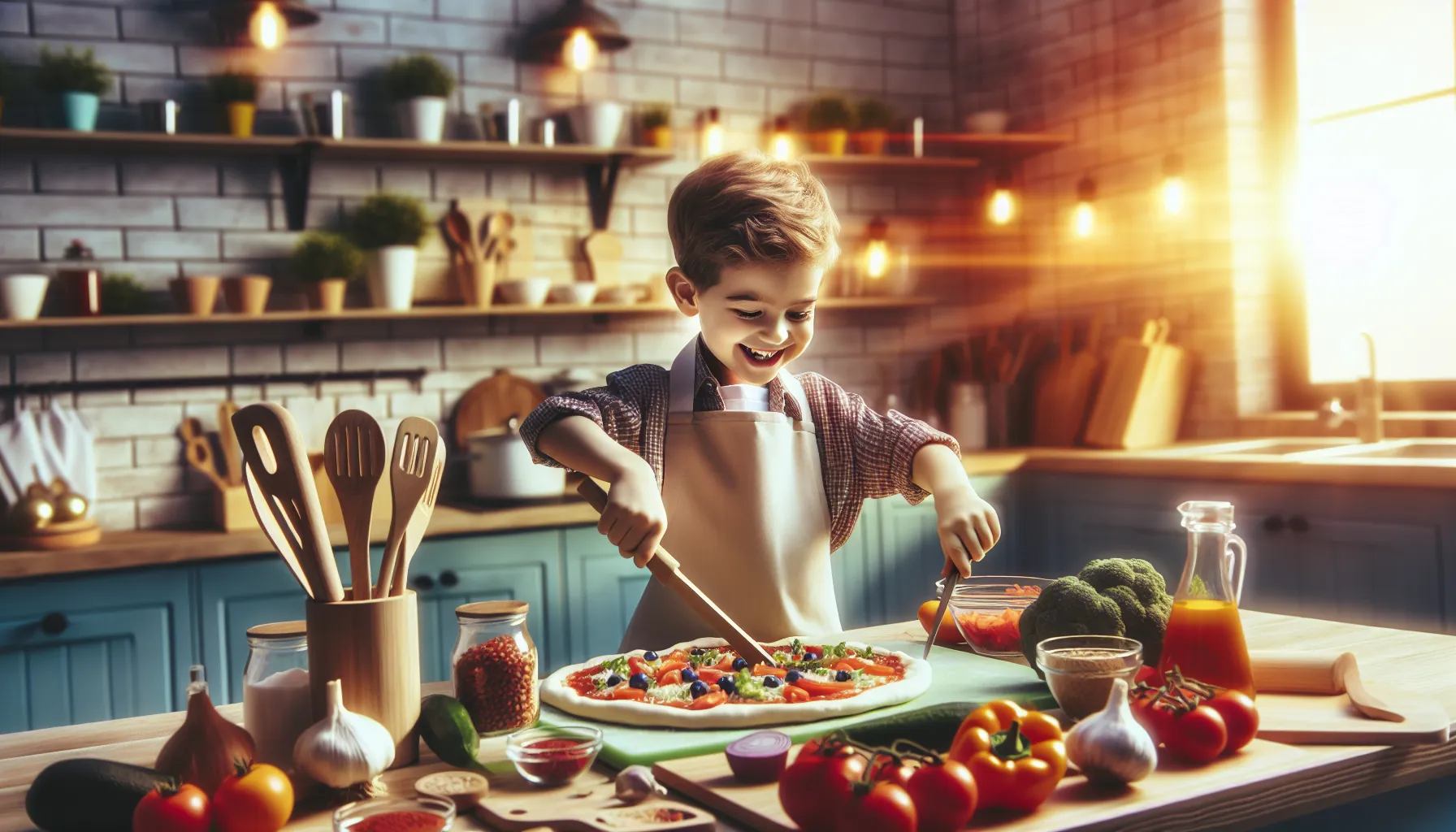
Key Takeaways
- International cooking lessons for kids promote cultural awareness, creativity, and confidence while introducing them to diverse global cuisines and traditions.
- Hands-on cooking activities build essential life skills, including teamwork, focus, and fine motor abilities, through practical kitchen tasks and problem-solving.
- Exploring international recipes broadens palates and enhances nutritional knowledge, offering children exposure to unique flavors, spices, and healthy ingredient combinations.
- Cooking introduces educational elements like math and cultural history, combining measurements, fractions, and storytelling to create a rich learning experience.
- Choosing the right lesson format—whether online classes or local workshops—can cater to your child’s preferences, providing flexible, engaging ways to spark culinary curiosity.
- Encouraging creativity and fun tools during lessons ensures kids stay inspired, while fostering a love for cooking that may create lasting memories and skills.
Cooking is more than just a life skill—it’s a gateway to creativity, culture, and connection. For kids, learning to cook dishes from different countries opens their minds to new flavors and traditions. It’s an exciting way to spark curiosity about the world while building confidence in the kitchen.
Have you ever watched a child light up as they mix ingredients or try a recipe from a faraway place? International cooking lessons offer that magic by blending hands-on learning with cultural exploration. Kids don’t just learn how to cook; they discover stories behind the food, fostering a deeper appreciation for global diversity.
Whether it’s making Italian pasta, Japanese sushi, or Mexican tortillas, these lessons turn cooking into an adventure. They inspire teamwork, encourage creativity, and create lasting memories. Together, we can help kids develop skills that go beyond the kitchen, shaping their understanding of the world through the joy of cooking.
Benefits Of International Cooking Lessons For Kids
International cooking lessons offer children more than recipes; they open doors to cultural knowledge and practical life skills. Exploring flavors from different countries helps kids develop a deeper appreciation for global traditions and ingredients. These experiences inspire curiosity about how people live and eat in various parts of the world.
Cooking lessons build confidence as kids master tasks like chopping, measuring, and combining ingredients. They gain hands-on practice with essential kitchen techniques while learning to follow detailed instructions. This structured process helps improve focus and fine motor skills.
Collaborating with peers during lessons fosters social skills and teamwork. Children learn to share responsibilities and communicate effectively, creating an environment that strengthens bonds and teaches cooperation. These lessons encourage independent thinking while also promoting collective problem-solving.
Exposing kids to international recipes enhances their understanding of taste combinations and nutritional diversity. Trying dishes from around the globe broadens palates and introduces new ways to enjoy healthy foods. For example, preparing Italian pasta or Japanese sushi allows children to experience different cooking methods and ingredient uses.
These lessons also incorporate valuable educational elements. Measurements, fractions, and conversions improve math skills, while discussions about different cultures enrich general knowledge. For instance, a child making Mexican tortillas may learn about ancestral cooking practices or historical trade routes.
Through global cooking activities, kids develop a sense of accomplishment, cultural awareness, and essential skills that’ll serve them throughout their lives. How could sharing these experiences in your home benefit your family?
Popular Cuisines To Explore With Kids

Exploring international cuisines opens the door to cultural learning and hands-on creativity. By introducing kids to dishes from different countries, we inspire curiosity and a love for diverse flavors.
Italian
Italian cuisine introduces kids to hearty comfort foods and simple cooking techniques. Preparing pasta from scratch or assembling a pizza teaches children basic skills like measuring and kneading dough. Signature dishes such as lasagna and bruschetta highlight the use of fresh ingredients like tomatoes, basil, and olive oil. Which Italian recipe would your child enjoy mastering first?
Japanese
Japanese cooking offers lessons in precision and attention to detail. Kids can learn to roll sushi, shape rice balls, or assemble bento boxes with colorful vegetables. Traditional dishes like miso soup or teriyaki introduce flavors like soy, ginger, and sesame. How can your child recreate vibrant meals inspired by Japanese tradition?
Mexican
Mexican dishes spark creativity with bold flavors and vibrant colors. Children enjoy making tacos, folding quesadillas, or mixing guacamole. Beyond cooking, they can explore the history of corn, beans, and peppers, essential ingredients in Mexican cuisine. What exciting combinations of flavors might your child discover next?
Indian
Indian cuisine encourages kids to experiment with spices like cumin, turmeric, and cardamom. Making dishes such as naan, dal, or curry introduces them to varied textures and bold seasoning. Preparing these meals provides insight into traditional cooking methods and the importance of family-meal rituals. Which spices might your child enjoy exploring together with you?
Tips For Making Cooking Lessons Fun And Engaging

Cooking with kids can be an exciting and joyful experience. By focusing on activities that spark interest and hands-on learning, we can make these lessons both entertaining and meaningful.
Incorporating Storytelling
Adding stories to cooking lessons keeps kids engaged and curious. Share the origins of recipes or the cultural significance of certain dishes. For example, while making Italian pizza, explain how it became a global favorite. Encourage kids to imagine the lives of people who created the recipes they’re preparing. How did these dishes become part of their traditions? This approach makes lessons feel like an adventure across cultures.
Using Kid-Friendly Tools
Choose cooking tools that are safe and appropriate for small hands. Items like silicone spatulas, plastic knives, and measuring spoons help children participate actively without frustration. Providing tools in bright colors or fun shapes can make the experience even more appealing. What tools can you include to make kids feel confident and empowered in the kitchen?
Encouraging Creativity
Let kids customize their recipes with toppings, designs, or flavors. Encourage them to think of new ideas while staying true to the dish’s theme. For example, they might add their choice of herbs to pasta or decorate cookies inspired by a country’s flag. Offering simple choices fosters independence and creativity. How can kids make the dish their own while learning about a new cuisine?
Choosing The Right Platform For Cooking Lessons
Selecting the right platform for kids’ cooking lessons can make learning both engaging and effective. The right choice depends on preferences like scheduling flexibility, learning style, and available resources. How do we identify which option suits our needs best?
Online Classes
Online cooking classes offer flexible learning accessible from home. These classes often provide pre-recorded videos or live sessions, making it possible to choose the pace that works best for your child. They typically feature step-by-step instructions, allowing kids to follow along independently or with minimal supervision.
Virtual lessons also introduce opportunities to explore international cuisines with instructors who share cultural insights and cooking techniques. What better way to learn about global food traditions than through direct interaction with diverse chefs?
When choosing an online platform, check for child-friendly features. Look for classes that include short, easy-to-follow segments tailored for younger learners. Consider whether the platform provides downloadable recipe cards, ingredient lists, or even interactive Q&A sessions for added engagement.
Local Workshops
Local workshops give kids hands-on experience in a structured group setting. These in-person lessons often take place in community centers, culinary schools, or specialty cooking spaces. They provide social learning environments where children can collaborate with peers, boosting teamwork and communication skills.
Workshops may focus on traditional dishes from different cultures, offering kids the chance to experience new ingredients and cooking styles firsthand. Does your child enjoy trying new things? This environment could spark their creativity and culinary curiosity.
Parents should review the workshop’s class size, instructor experience, and safety protocols before enrolling. Smaller class sizes help ensure individual attention and a supportive learning atmosphere. It’s also helpful to inquire if workshops include take-home materials for continued practice outside the class.
Both online and local options offer enriching experiences. The best fit depends on what works for your child and keeps them motivated to explore the joy of cooking.
Conclusion
International cooking lessons for kids open the door to a world of flavors, cultures, and lifelong skills. They’re more than just an activity—they’re an opportunity to inspire curiosity, creativity, and confidence. By exploring global cuisines, children gain a deeper understanding of diversity while building practical abilities that will serve them for years to come.
Whether through online classes or local workshops, these lessons create meaningful connections and lasting memories. With the right approach and tools, we can turn the kitchen into a space where kids learn, grow, and thrive. Let’s encourage them to discover the joy of cooking and the beauty of our shared global heritage.
Frequently Asked Questions
Why is cooking an important skill for children to learn?
Cooking helps children develop creativity, confidence, and practical life skills. It fosters cultural awareness, improves focus, and enhances teamwork. By cooking, kids also learn about healthy eating and develop their fine motor skills.
What are the benefits of teaching kids to cook international dishes?
Teaching kids to cook international dishes sparks curiosity about different cultures and traditions. It broadens their palates, helps them appreciate global diversity, and encourages creativity through exploration of new flavors and techniques.
Which cuisines are best to start with for kids?
Italian, Japanese, Mexican, and Indian cuisines are great starting points. These cuisines offer simple yet engaging foods like pasta, sushi, tacos, and naan that allow children to learn basic kitchen skills and experiment with new ingredients.
How can cooking boost a child’s confidence?
Mastering kitchen tasks like measuring, mixing, and assembling dishes builds a child’s confidence. They gain a sense of accomplishment, improve their problem-solving skills, and feel proud of their creations.
What tools can make cooking easier for kids?
Kid-friendly tools such as safety knives, small measuring cups, and lightweight mixing bowls make cooking easier and safer. These tools are designed for small hands and help boost a child’s participation and confidence in the kitchen.
How can parents make cooking lessons more engaging?
Parents can incorporate storytelling about the origins of dishes, let kids customize recipes, and use colorful ingredients to keep lessons fun and interactive. Encouraging kids to express themselves through cooking makes the experience more meaningful.
Are online cooking classes effective for children?
Yes, online cooking classes are flexible and offer step-by-step guidance, making them ideal for learning from home. They also connect kids with chefs from different cultures, enriching their culinary and cultural knowledge.
What are the advantages of local cooking workshops for kids?
Local workshops provide hands-on learning in a group setting, fostering teamwork and communication. These sessions allow children to interact with others, practice social skills, and build confidence under the supervision of experienced instructors.
How do you choose the best cooking class for kids?
Select a class based on the child’s learning style, interests, scheduling flexibility, and safety. Consider factors like class size, instructor expertise, and whether the format (online or local) suits your child’s needs and motivation.
How does cooking teach children about other cultures?
Through cooking, children learn about the origins, traditions, and symbolism of different cuisines. This exposure helps them understand global diversity, explore new ingredients, and appreciate the unique lifestyles of other cultures.

